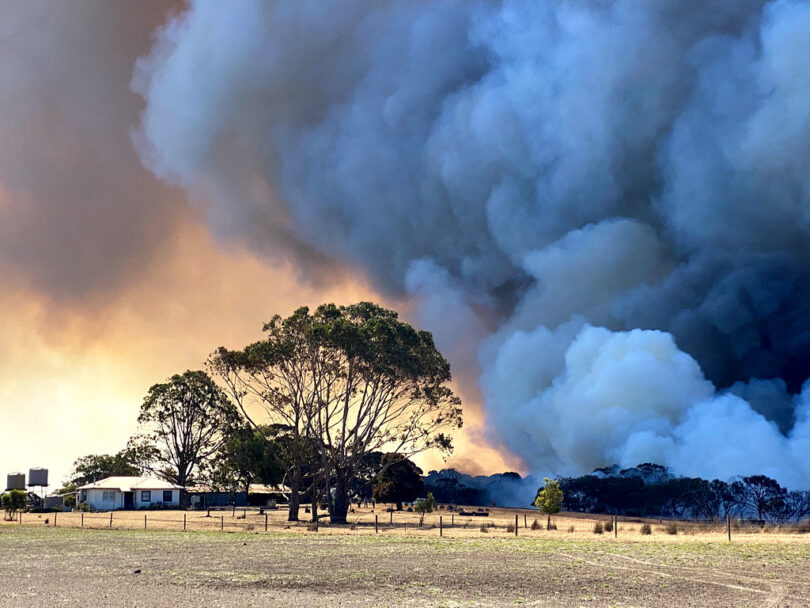Journalist Zoe Daniel on the challenges of reporting on climate change
Debate over the media’s coverage of climate change has revolved around the concept of ‘false balance’ and the language used to describe climate change. However when climate change is covered is just as important.

Journalists reporting on climate change compete for attention with other stories. What they may not realise is that they are also competing with powerful psychological forces. Those forces diminish the perception of future risks. One such force is the ‘immediacy bias’, which causes people to overweight present risks and underweight future risks. It distorts people’s judgment of the true risk, diminishing the gravity of future threats. The accurate coverage of climate change loses priority because of the influence of this powerful human bias.
Veteran ABC foreign correspondent Zoe Daniel says that’s reflected in media coverage. “When there is something that’s a slow encroaching disaster like climate change…the media kind of get a bit bored with it because there is no big headline.”
That is the very function of the immediacy bias. Transforming, a real and present danger, into an apparent distant, slow encroaching disaster.
Climate change has not been the news. When it has been covered, it has been typically coupled with a crisis or event rather than as a stand-alone topic. It has been peripheral, forming part of an explanation for a newsworthy story. The Black Summer bushfires of 2020, the record breaking flooding along Australia’s east coast in early 2022 and the COP26 Summit in Glasgow in late 2021 all raised the climate change issue, but once the main story was over, the coverage stopped.
Climate change coverage competes with other news stories. Some of those stories are indisputably important, like COVID-19 or the war in Ukraine. Others are less consequential.
Environmental journalist George Monbiot noted that while news was breaking of the unprecedented simultaneous 30 degrees Celsius in the Arctic and 40 degrees Celsius in the Antarctic, news headlines were dominated by a comedian being slapped by an actor at the Oscars.
One way to understand this prioritisation of news stories by the media is that the wider story of climate change is not new. It is therefore not news – unless it can be coupled with a story that adds a fresh or local element to it.
However, not all news stories which outcompete climate change are trivial.
According to the ‘finite pool of worry’ hypothesis, as worry and concern rises over other significant issues, people’s capacity for worrying about climate change reduces. That suggests people have an exhaustible supply of worry. If correct, that is another powerful psychological force working against climate change coverage.

NSW Australia in September 2019. Photo by
Tatiana Gerus via Flickr.
However, studies conducted during the COVID-19 pandemic challenge the ‘finite pool of worry’ hypothesis.
A 2020 study found that while climate change coverage itself declined during the early months of COVID-19 the audience demand for climate change coverage remained at pre-pandemic levels.
According to Media Cloud, which tracks the weekly percentage of news articles produced by a cross-section of major U.S news sites, there was a pre-pandemic weekly range of 2-3 per cent of news articles on climate change. During the early months of the pandemic, those numbers dropped to less than one per cent.
Even though media coverage of climate change dropped, readership demand for those stories didn’t decline.
These studies are corroborated by Covering Climate Now, an international media collaboration formed to increase coverage of climate change in every newsroom. It found that even when coronavirus coverage peaked in April, some of the world’s biggest news outlets said their audiences had “little appetite for stories that weren’t about the virus, with one exception: climate change” and that continued to generate significant traffic.
Perhaps the news media is misreading the public’s appetite for climate change stories. It may be that journalists and editors are also influenced by those powerful psychological forces which under-estimate the gravity of future risks. That needs to change if the media is to give climate change the prominence that its true threat warrants.
Featured image: Bushfires burning on Kangaroo Island in South Australia, January 2020. Photo: New Matilda via Flickr.






